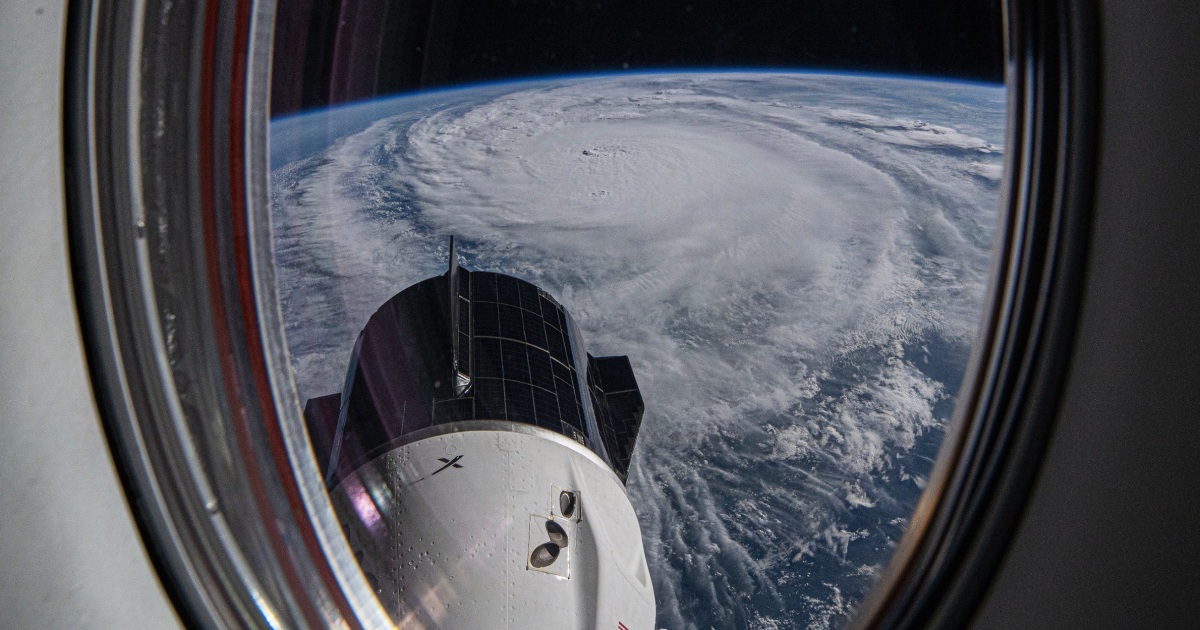The Summary
- Hurricane Milton intensified at one of the fastest rates in recorded history.
- The storm’s winds — which exceeded 175 mph — were unprecedented for an October hurricane.
- Record hot water in the Gulf of Mexico aided Milton’s intensification, and a process known as eyewall replacement led it to grow in size.
At nearly every turn, Hurricane Milton has offered surprises.
What started as a small, tightly wound hurricane has grown into a sprawling monster that intensified at one of the fastest rates in recorded history. The storm threatens to send a dangerous surge of water to parts of both Florida’s west and east coasts, with the flood-prone metropolitan area of Tampa Bay — home to more than 3 million people — at particular risk.
As the storm developed, record warm seas in the Gulf of Mexico aided its intensification. Later, it grew in size as it underwent a process of eyewall replacement.
Here’s how Milton developed into such a significant threat.
A Pacific influence
Hurricanes that approach the U.S. typically follow a similar path: Tropical storms spin off of Africa’s west coast, traverse the Atlantic and grow in strength as they enter warm waters in the Caribbean Sea.
But part of Milton’s origin story lies in the eastern Pacific Ocean. The hurricane formed when the remnants of a tropical depression in the Pacific barreled east across the Yucatán Peninsula and met a stalled front in the Gulf of Mexico. The most recent storm that struck Florida after having formed in the same area — Mexico’s Bay of Campeche — did so in 1867.
When the tropical depression entered the Gulf, it offered “a little bit of vorticity, that measure of spin,” to a system of thunderstorms there, said Chris Slocum, a physical scientist with the National Oceanic and Atmospheric Administration’s Center for Satellite Applications.
Then, Milton got organized and pushed away from other systems.
“It’s that isolation from other thunderstorms that allows the pressure to deepen and the winds to develop,” Slocum said. Milton began to pull air toward its center and energy out of the warm ocean.
Small but strong
Milton started as an extremely small storm, which allowed it to conserve its angular momentum, spinning tight and fast around a narrow eye.
In the Gulf, it encountered record high ocean temperatures and moist, warm air — the ingredients necessary to intensify. On Monday, the central pressure within Milton’s core dropped at rates one scientist described as “insane” as Milton grew stronger. Values of central pressure are closely related to the strength of a storm and its wind speeds.
“This is just horrific,” said John Morales, a hurricane specialist for NBC South Florida, who choked up on the air as he discussed the significance of the drop in pressure.
Milton’s wind speeds increased by 92 mph in roughly 24 hours, according to Climate Central, a nonprofit research group. That far exceeded the milestone for what scientists consider rapid intensification: a gain of 35 mph in 24 hours.
“It went from being a tropical storm to being a Category 5 hurricane in less than two days, which is off the charts,” said Karthik Balaguru, a climate scientist at the Pacific Northwest National Laboratory.
Jonathan Lin, an atmospheric scientist at Cornell University who forecasts and models hurricanes, called Milton “one of the most rapidly intensifying hurricanes we’ve ever seen in the Atlantic.”
The hurricane’s winds — which exceeded 175 mph — were unprecedented for a storm in October. Milton is the strongest Gulf of Mexico hurricane since Hurricane Rita in 2005.
A new eyewall
In the Northern Hemisphere, hurricanes spiral counterclockwise around mostly cloud-free eyes at their centers.
Overnight Monday and into Tuesday, bands of rain developed on Milton’s outside edge. Those storms coalesced and formed a second ring, creating a replacement eyewall and tripling the radius where maximum wind speeds were recorded, Slocum said.
That phenomenon, known as eyewall replacement, typically causes storms to grow in breadth but lose some wind speed, which is what happened to Milton. It can happen several times as a storm develops. Once the process is over, the hurricane can begin gaining intensity again, if conditions allow.
“You can think of it as the shedding of its skin. Once it sheds its skin, it can re-intensify. That’s exactly what we saw with Milton,” Lin said.
A wobble
Milton “wobbled” Tuesday afternoon, changing its projected track and shifting its estimated landfall south, according to the National Hurricane Center.
Wobbles result from instabilities due to complicated dynamics inside the eyewall.
Lin explained the dynamic by comparing a hurricane to a spinning top, or dreidel.
“Sometimes you’ll see a spinning top — you push it a little bit, give it a nudge, and it will wobble a bit and then start to turn again,” Lin said. “It reorients itself.”
A significant wobble can shift a storm’s track and determine which locations get the brunt of the hurricane.
Forecasters expect as much as 13 feet of storm surge. If the storm veers slightly south, it could keep the worst of the inundation out of Tampa Bay, which is particularly vulnerable. Hurricane Irma in 2017 wobbled east, which helped keep Tampa Bay from getting a projected storm surge of 12 feet or more.
When the storm does reach the coast, the areas south of Milton’s eye should get the heavy gusts that push water onto shore — and the resulting storm surge.


